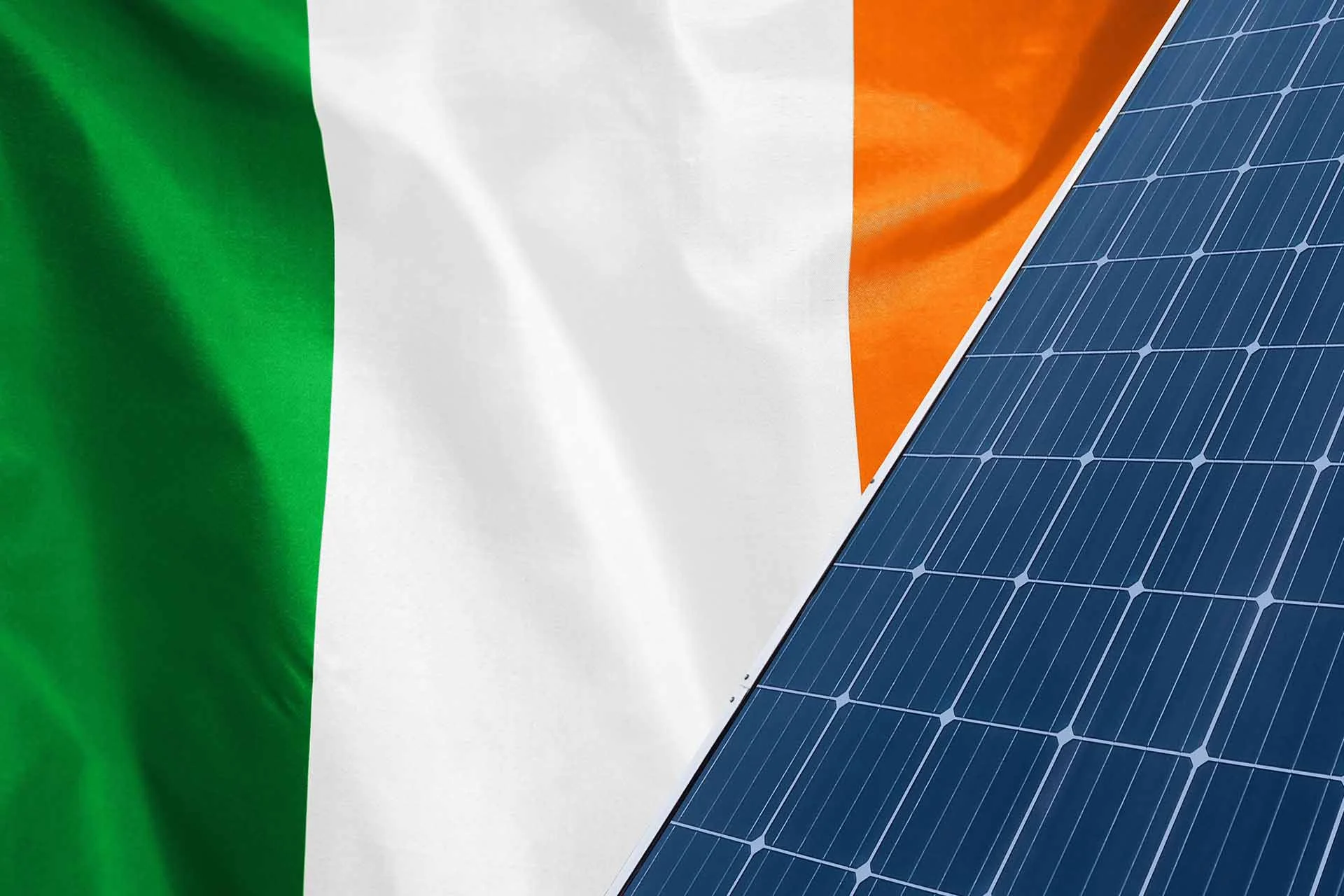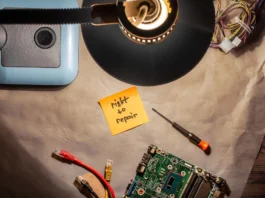Close your eyes and picture Ireland’s misty hills, legendary drizzle, and rolling green fields. Not exactly the first place you’d expect a solar boom, right? Then came March 25, 2025, when—despite the island’s famously overcast skies—Ireland’s solar panels soaked up enough rays to generate 750 megawatts (MW) of electricity. That beats their previous solar record by 18 MW and can power nearly 300,000 homes. If you’re thinking that’s a tiny miracle from the Irish sun, you’re not alone.
Local coverage from the Irish Examiner confirmed the big day. Sure, 750 MW might sound modest next to sunny giants like Spain or California, but for Ireland, it’s a milestone that shows how quickly things are changing. By the end of 2024, they’d added over 400 MW of large-scale solar, topping a total installed capacity of 1 gigawatt (GW). In a country long known for frequent clouds, that’s an achievement worth celebration.
A Closer Look at the Record
On that sunny Tuesday, the Irish grid soared to new solar heights. The day’s total feed from solar hit 750 MW, surpassing the 732 MW record set in July 2024. According to grid operators like EirGrid, renewable power covered 39% of the nation’s electricity for the month, with solar punching well above its weight on bright afternoons. At times, solar soared to meet a big chunk of Ireland’s daytime demand. That’s not just a neat statistic for engineers; it’s also fewer carbon emissions, cheaper electricity for consumers, and—importantly—an encouraging sign that Ireland can thrive on more than just the wind.
Charlie McGee, an EirGrid systems operation manager, pointed out that solar’s surge was boosted by improved battery storage. On March 14, grid-scale batteries hit a new high by discharging 300 MW of power to fill supply gaps. “Storage is a quiet hero,” McGee explained. “It keeps the grid steady when the sun or wind changes, making every kilowatt more valuable.”
From Overcast Skies to Solar Highs
So how did Ireland, famed for some of Europe’s soggiest weather, get here? One piece is better technology: modern panels can draw power even in lower light. Another part is cost: prices for panels and inverters have dropped significantly in the last decade. A third factor is the government push, spurred by climate goals. Ireland aims to have 80% of its electricity from renewables by 2030.
In the national mix, wind power traditionally took the spotlight. But storms can vanish—just like the sun disappears behind clouds. The solution? Diversify. Solar helps fill daytime gaps. Battery storage swoops in to smooth out the grid at any hour. Meanwhile, gas-fired plants still produce 39% of Ireland’s electricity, so there’s more ground to cover.
A Battery Boost: The Unsung Heroes
March also broke a record for battery discharges at 300 MW. That might sound technical, but it’s a big deal. Batteries soak up extra green power when the sun or wind is strong, then feed it back when needed, balancing supply and demand. This synergy between solar arrays and large-scale batteries is how you keep lights on even if a rogue cloud or sudden calm threatens the energy flow.
At the micro scale, home batteries are catching on too. People who install rooftop panels often add a battery that can power evening appliances or charge an electric car. While these steps may seem minor, they combine to form a robust layer of resilience. Lab-speak calls it “distributed energy resources.” In everyday terms, it’s small groups of neighbors or families each generating and storing power, turning entire communities into a flexible, low-carbon system.
Challenges Loom on the Horizon
Sure, 750 MW is an impressive number. Yet, gas turbines are still responsible for a big slice of the grid’s day-to-day generation—especially on cloudy days or windless nights. And we can’t ignore the mismatch between potential solar output and the grid’s infrastructure. At times, Ireland’s grid can handle up to 75% from renewables, but not beyond that, due to stability concerns. If the wind or solar share climbs too high, they risk grid imbalances.
What’s needed? Infrastructure upgrades. More advanced inverters, bigger or smarter transmission lines, faster-responding reserves, and possibly improved cross-border connections with the UK or Europe. EirGrid has been pushing a “Shaping Our Electricity Future” plan to modernize lines, incorporate digital monitoring, and adopt new operational rules to accommodate more variable renewables. All this costs money and takes time, but if Ireland wants 80% renewable electricity by 2030, there’s no alternative.
Community-Driven Growth: Small Rooftops, Big Impact
Ireland’s push isn’t just about solar farms. Over 120,000 small-scale solar installations dot rooftops nationwide, collectively hitting 500 MW of capacity, as reported by PV Magazine International. These mini systems might power an electric kettle or fridge, with any excess feeding back to the grid or stored in a battery. Blue & Green Tomorrow adds that household arrays saved Ireland a combined $95 (€88) million in electricity costs during 2024. That’s money in people’s pockets, plus less stress on the national grid.
It helps that the government encourages microgeneration. Grants and feed-in tariffs reward owners for each kilowatt-hour they send back. Over time, these incentives are broadening ownership. If your local library, school, or sports club puts solar on top, they cut utility bills and teach folks about green living. Such community-based solutions can scale quickly if momentum holds.
Economic Ripples
Why does it matter whether solar sets a new record? For local businesses, stable power can lower overhead. For big industries, it signals that Ireland’s energy future isn’t reliant on imports or fluctuating fossil prices. This encourages new factories or data centers to choose Ireland. After all, a greener grid can help them meet corporate climate pledges. Meanwhile, the entire solar supply chain—panel manufacturers, installers, battery providers—reaps benefits. That fosters jobs, from engineering graduates to tradespeople who physically install modules.
EirGrid likewise sees a chance for synergy with offshore wind, which Ireland is also ramping up. A blend of robust offshore wind in winter and expanded solar in summer forms a year-round clean energy backbone. If Ireland nails the energy transformation, it might become a net exporter on especially windy or sunny days, shipping electricity abroad. The extra revenue might fund further upgrades or help keep electricity prices stable.
A Changing Climate for Renewables
Observers note that Ireland’s climate has shifted in some ways. Summers can be drier and sunnier than decades ago, though the difference is subtle. More consistent sunshine in March or July helps the panels, but climate change also brings unpredictability—like stronger storms or unusual temperature swings. That’s partly why the battery story is so critical. Short bursts of extreme weather can be easier to navigate with ample storage and flexible demand.
In the bigger picture, the European Union is pushing every member state to slash emissions and cut reliance on imported fossil fuel. Ireland once trailed some neighbors in renewable capacity, focusing mostly on onshore wind. But as new solar records show, it’s stepping up. The progress is heartening, even while acknowledging that meeting 80% renewables in just five years will be a heavy lift.
Day in the Life of the Irish Grid
How does a normal March day look now? Early morning: wind might supply 20% of the power. The sun is still low, so solar is minimal. By midday, solar ramps up, sometimes hitting 500-600 MW, while wind might ease if air pressure is high. Gas ramps down when solar is strong, but it can shift back up if clouds pass or the evening load surges. Meanwhile, battery systems help flatten out peaks. Once midnight hits, wind often picks up, so the grid transitions to more wind power. Next day, same dance. We’re seeing a truly dynamic grid. People once used to a single big thermal power station feeding everything now watch a mosaic of smaller, cleaner resources.

Charlie McGee from EirGrid notes that “this nimble approach is our new normal. We can’t just switch a big coal or gas plant on or off at whim. Instead, we juggle multiple sources: solar here, wind there, plus a battery or two for good measure. Thanks to new software, we handle it in real-time.”
The Road Ahead
Ireland’s solar story is part of a broader global wave. Countries once overshadowed by big solar players are finding that installing panels is increasingly cost-effective. Panels used to be a pricey niche. Now they’re mainstream, with growing battery adoption bridging the reliability gap. Each fresh milestone, like that 750 MW record, normalizes the idea that the sun can power major parts of the economy, even in climates we’d never label “sunny.”
- Grid Upgrades: Ireland must keep upgrading lines, plus digitizing the system to handle fast changes in solar or wind output.
- Battery & Storage: Large battery installations and pumped hydro expansions are on the agenda to supply stability on days with big fluctuations.
- Policy Consistency: The government’s 80% renewable target by 2030 will require stable feed-in tariffs, no surprise reversals in incentives, and a robust carbon tax.
- Public Engagement: Community solar gardens, cooperative battery banks, or shared microgrids might spur further buy-in. People help shape local projects, see tangible benefits, and push for more progress.
One lingering question is how to manage the last few percent. Hitting 75% or even 90% renewables is feasible with effort, but surpassing that consistently demands next-level tech, from dynamic frequency response to hydrogen storage. Some days you might have 110% renewables and want to export surplus or store it for tomorrow. Other days, you have only 5% if it’s calm and dull outside. Partnerships with UK or EU neighbors can also help.
A Sunny Future
All these big plans resonate at street level, too. If a homeowner sees neighbors saving money through rooftop panels, that might be the final nudge for them to install their own. The more rooftop solar, the less the local distribution network depends on the big fossil-fueled power plants. The synergy continues if workplaces or farmland adopt solar. Farmers can combine ground-mounted arrays with grazing land, boosting income while preserving open space.
All told, Ireland’s new solar record isn’t just a fleeting headline. It shows how quickly a relatively small country with historically modest sunshine can pivot. The system is still partially reliant on fossil fuels, but each leap in solar capacity, wind expansions, and storage improvements edges Ireland closer to a net-zero grid.
Ireland’s climate minister praised the solar record, calling it “a shining testament to what we can do when government policy, industry innovation, and community enthusiasm align.” A strong sign that people across the board see solar as an economic and environmental plus, not a gamble.
How You Can Plug In
Thinking of ways to help amplify this solar wave?
- Consider Rooftop Panels: Even smaller arrays can reduce monthly bills and feed surplus back to the grid.
- Explore Battery Solutions: Whether for your home or community group, storage smooths out renewables, lowers peak charges, and bolsters local resilience.
- Stay Informed: Track updates and policy changes. Knowing the facts fosters a constructive push for more solar-friendly regulations.
- Engage Local Leaders: Municipalities often decide on solar permissions or grants. Voice your support if you want to see more solar farms or microgrid pilot projects.
With each new record, Ireland demonstrates that even a land renowned for drizzly skies can turn a bit of sun into a robust, dependable, green powerhouse. The key is to keep the momentum going—through a mix of technology, forward-thinking policies, and shared enthusiasm.
As new facilities come online, who knows when we’ll see the next big record? In a future not so far away, that might not even be news anymore because hitting gigawatt-level solar feed-ins on a sunny day will be just the norm. Until then, Ireland’s solar story shines as proof that surprising transformations can happen under those famously overcast heavens. If that doesn’t inspire the rest of the world to step up its solar game, what will?





Pretty good for a country known more for rain than rays.
☀️⚡